Australian grainfed beef in Japanese demand
Australian grainfed beef in Japanese demand
Underpinning beef exports to Japan in 2015 has been grainfed product. After 11 months, volumes are up 9% year-on-year, at 128,388 tonnes swt – the highest volume for this period since 2011.
Conversely, overall Australian beef exports to Japan for the year-to-date are 263,204 tonnes swt, down marginally (1%) from the previous year (Department of Agriculture).
As a result, the grainfed proportion is 49%, the highest level on record. This, along with strong Australian beef prices in general, is contributing to higher values for the Australian beef trade with Japan – 21% above the previous year at A$1.544 billion for the year-to-October (ABS).
Looking ahead, there are several factors that are likely to influence Japanese beef demand in 2016, particularly for grainfed beef:
Positives
- US is the largest competition for Australian grainfed beef in Japan, and its currency is anticipated to remain strong against the Japanese yen and A$.
- The Japan-Australia Economic Partnership Agreement (JAEPA) continues to deliver tariff cuts for Australian beef. With another tariff reduction scheduled for April 2016, Australian chilled beef will be imported at a 30.5% tariff rate for chilled, and 27.5% for frozen, while the tariff for US beef remains at 38.5%.
- Increased commitment by Japanese end users with Australian brands and trade relationships, following the JAEPA and shortage of US product.
Potential constraints
- Lower Australian beef production in 2016
- US beef production is forecast to recover gradually from 2016
- US increasing its trade and promotional push in the market, in anticipation of a recovery in exports. Some buyers are reportedly willing to re-engage with US suppliers to secure supply
- Japanese consumers opting for cheaper proteins at supermarkets (major outlets for Australian chilled grainfed beef)
Other factors
- Implementation of Trans Pacific Partnership (TPP) – a regional economic framework that will reduce beef import tariffs further, but also set Australian and the US beef at a ‘level playing field’. This is not anticipated to occur within 2016.
As for grassfed beef, Australia will remain a dominant and critically important supplier to the Japanese foodservice and food processing/manufacturing sectors. That said, export volumes will hinge upon Japanese buyers’ ability to bid against international equivalents, under the anticipated reduction in supply.



